
The Ancient Oriental Hand Knotted Carpet in the Museum
The Pazyryk carpet was discovered in an unique archaeological excavation in 1949 among the ices of Pazyryk Valley, in Altai Mountains in Siberia. This Iranian carpet was found in the grave of a Scythian prince. Radiocarbon testing indicated that the Pazyryk carpet was woven in the 5th century BC. This carpet is 283 by 200 cm (approximately 9.3 by 6.5 ft) and has 36 symmetrical knots per cm² (232 per inch²). The advanced weaving technique used in the Pazyryk carpet indicates a long history of evolution and experience in this art. Pazyryk carpet is considered as the oldest hand knotted carpet in the world. Its central field is a deep red color and it has two wide borders, one depicting deer and the other Persian horsemen.

The advanced weaving technique used in the Pazyryk carpet indicates a long history of evolution and experience of this art. Most experts believe that the Pazyryk carpet is the final achievement of at least one thousand years of experience and history. According to this theory the art of carpet-weaving in Iran is at least 3500 years old.
The Ardabil Carpet is the world's oldest dated hand knotted Iranian carpet and one of the largest, most beautiful and historically important. It was made in the town of Ardabil in north-west Iran, the burial place of Shaykh Safi al-Din Ardabili, who died in 1334. The Shaykh was a Sufi leader, ancestor of Shah Ismail, founder of the Safavid dynasty (1501-1722). While the exact origins of the carpet are unclear, it's believed to have been commissioned by the court for the shrine of the Shaykh, which, by the 16th century, had became a place of pilgrimage.
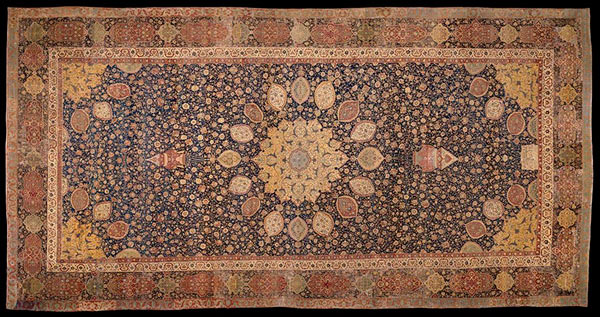
This Iranian hand knotted carpet was still in the shrine of Shaykh Safi al-Din in 1843, where it was seen by British visitors. Around 30 years later, the shrine suffered an earthquake, and the hand knotted carpet was sold to a Manchester carpet firm, who in turn put it up for sale in 1892. On inspecting the carpet on behalf of the V&A, designer William Morris reported it of “singular perfection … logically and consistently beautiful”. The Museum acquired the carpet for £2,000 in March 1893.

In 2006, the V&A created a case in the centre of Room 42: The Jameel Gallery of Islamic Art, so that the carpet could be seen as intended, on the floor. To preserve its colours, it is lit for ten minutes on the hour and half-hour.
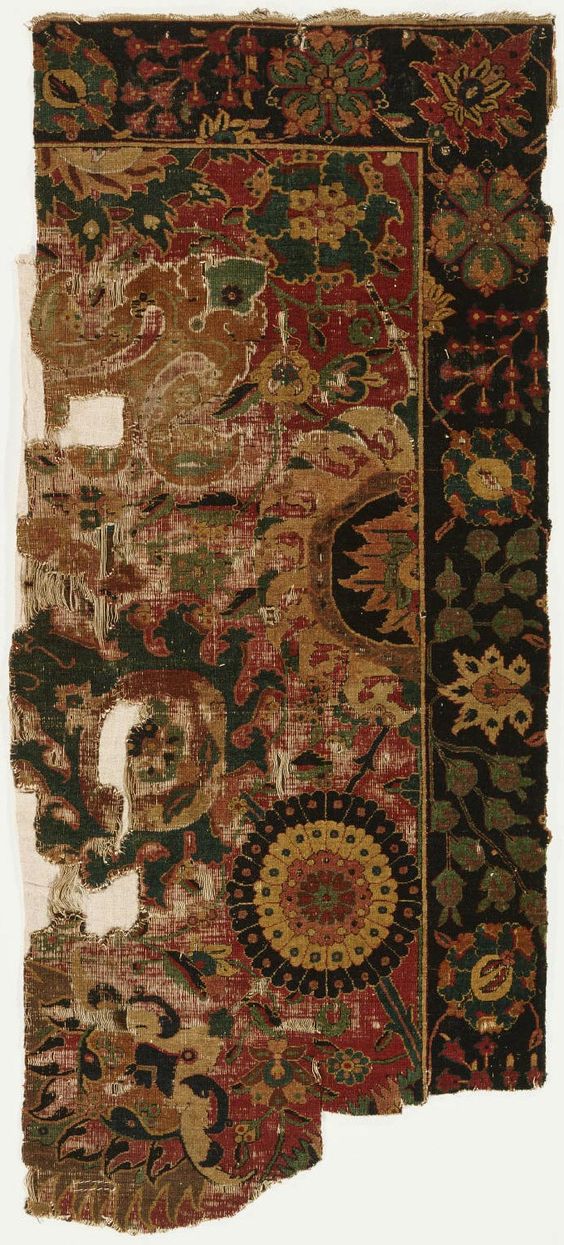
Philadelphia Museum of Art - Collections Object: Vase Carpet Fragment Vase Carpet Fragment Artist/maker unknown, Persian Geography: Made in Kerman, Iran, Asia
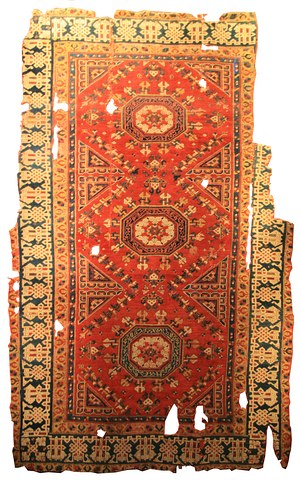
The opening of the trade routes between Europe and Persia and the 1873 Vienna World Exposition played an important role in popularizing oriental rugs and the arts of the Islamic East and Turkey in the western world.
Historic Three Star Holbein wool carpet made 1460 in Turkey. Hans Holbein the Younger was a German born painter who depicted oriental hand knotted carpets in European paintings of the Renaissance.
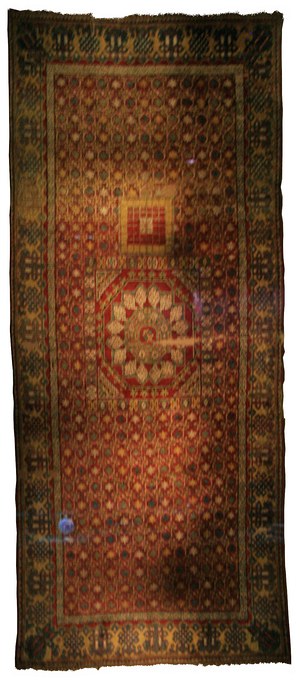
The Timurid Chessboard Carpet silk and cotton early 15th century from Central Asia.
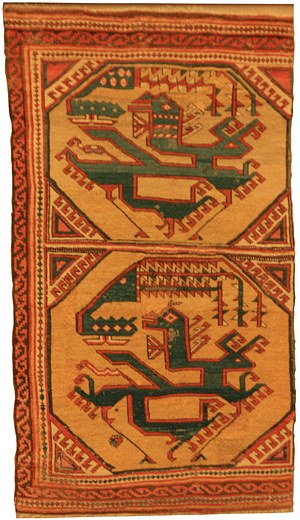
A woolen Dragon and Phoenix carpet mid 15th century from Turkey
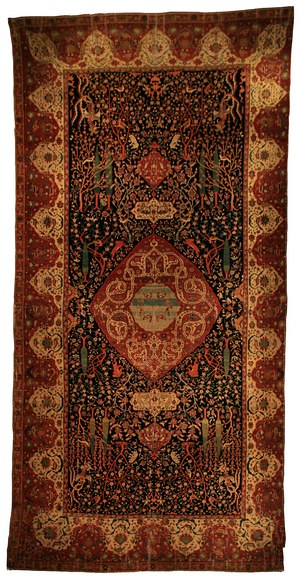
Schwarzenberg Carpet woll and cotton 16th century Iran
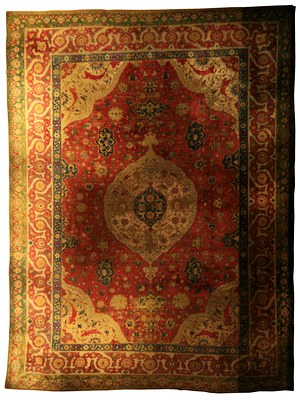
Rothschild Small Silk Medallion, mid 16th century, Kashan (Iran)
